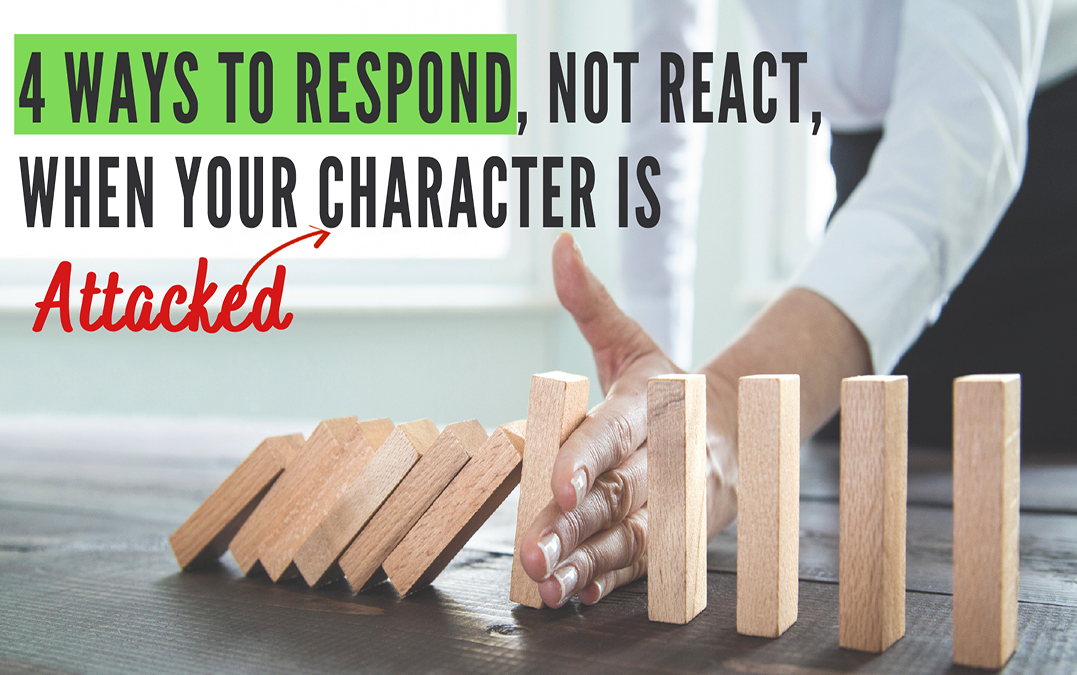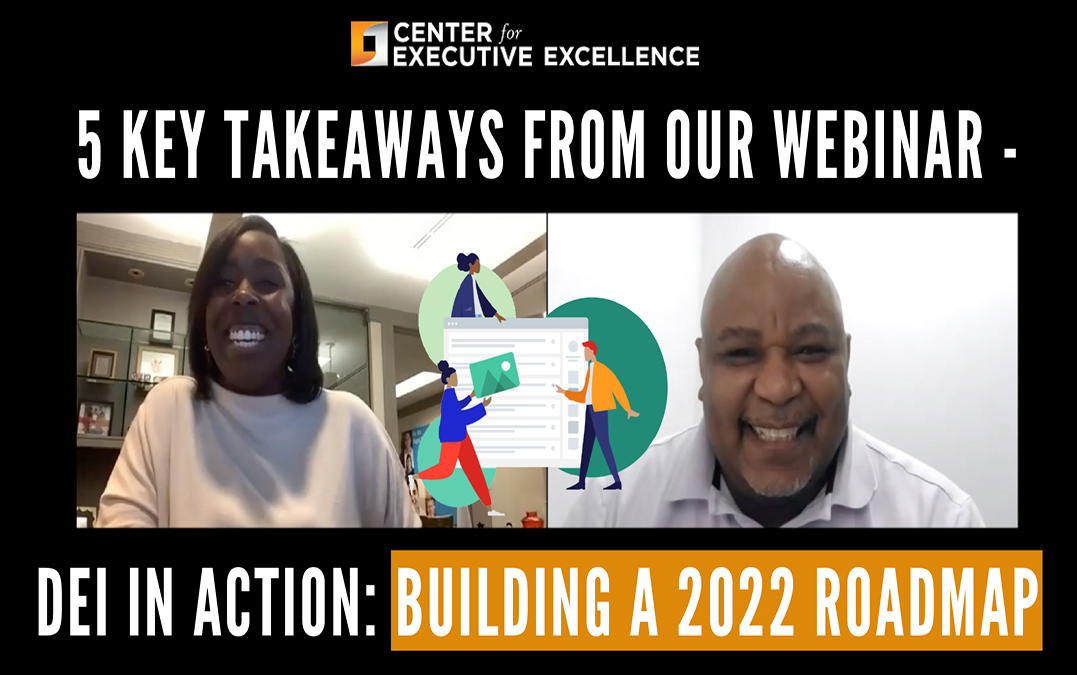
Leadership
Over the past 12 years, I have been honored to explore and debate the essence of power with Dr. Tony Baron. Specifically, how power impacts leadership, how leadership impacts culture, and, ultimately, how culture impacts performance. With a double doctorate in psychology and theology and decades of executive coaching experience with Fortune 100 companies, you can imagine the depth and breadth that Tony adds to the subject.
By: Dr. Tony Baron
Nobody likes to be labeled. And nobody likes to be misunderstood. Given the context of our national dialogue these past few years, this may be a good time to talk about how to respond, instead of react, when we are misunderstood.
I am not talking about times when there is a lack of clarity in communication. I am talking about when others judge you based on misinformation they have received (or conceived) that results in them questioning your character.
The injustice hurts deeply. But, as leaders, our ultimate responsibility is to not to react, but to respond, by modeling the behavior we would like to see in others. It is a true test of how we use power. Will we use our position to force others to bend to our will? Or, will we use our position to practice the discipline of transformative leadership?
Here are four ways that you can practice transformative leadership and respond, rather than react, when others attack your character:
1. Practice the Discipline of Not Having the Last Word
A transformative leader influences others by modeling appropriate behavior not only in positive situations but also in periods of criticism. When people attack your character, they often want to engage you in a verbal volley. Don’t do it. Transformative leaders have the discipline to not have the last word.
2. Practice the Discipline of Humility
An attack on your character may immediately send you into defense mode. If you have power, you may be tempted to use that power to punish the person who is attacking you. However, a transformative leader must refrain from presuming you can silence another person, and refrain from letting others know how wronged you feel. Humility comes from the word “grounded.” A grounded person reflects deeply to see what truth may be in the midst of falsehoods, what path may be used for reconciliation, and what direction you need to follow.
3. Practice the Discipline of Civility
A transformative leader understands that people who attack their character often betray their own fears and anxieties in the process. When people spew words at you in anger, recognize the pain or anxiety behind their words. Pause to reflect before you engage, then practice the discipline of civility. In Reclaiming Civility in the Public Square, civility is defined as “claiming and caring for one’s identity, needs, and beliefs without degrading someone else’s in the process.”
4. Practice the Discipline of Wisdom
Knowledge is a compilation of things true, maybe true, and definitely not true. Knowledge can lead to pride and a sense of superiority over others. Wisdom, on the other hand, is insight into reality. Reality is the only thing a transformative leader can count on. People of wisdom seek reality – not illusions, innuendos, or ill feelings.
So, to those who feel you have been misunderstood, take courage in the midst of adversity. Seek reconciliation. Practice the discipline of not having the last word, humility, civility, and wisdom.
Question: Have you felt misunderstood recently? Which of these practices might help you respond instead of react?
Dr. Tony Baron is Distinguished Scholar-In-Residence at Center for Executive Excellence and an internationally recognized speaker, writer, corporate consultant, professor and the Former San Diego Director of Azusa Pacific University Graduate School of Theology.
Dr. Baron is the author of six books, including The Art of Servant Leadership and a workbook manual co-written with noted author and business leader Ken Blanchard. Throughout his career, he has worked with hundreds of companies including Ford Motor Company, Coca-Cola Company, Warner Brothers Studios, and Boeing, among many others.
Driven by the premise that excellence is the result of aligning people, purpose and performance, Center for Executive Excellence facilitates training in leading self, leading teams and leading organizations. To learn more, subscribe to receive CEE News!

Leadership, People
On Thanksgiving Day, most of us look forward to enjoying plenty of good food. But, plenty of good conversation? Not on the menu.
With family and friends of all generations and mixed political persuasions coming together for the holiday, avoiding conversational controversy can be tricky. Even once safe topics like the weather can quickly turn into a stormy debate. As much as 64% of Americans report that their mental stress levels rise this time of the year. But conflict mediator Priya Parker suggests that we use gatherings like Thanksgiving to connect meaningfully, take risks, and be changed by our experience.
In her 2019 TED Talk, Parker offers three steps to turning everyday get-togethers into transformative gatherings.
Step 1: Embrace a specific, bold purpose. Instead of focusing on all of the little things — menu, music, seating arrangements — focus instead on the conversation, connections, and purpose that’s bringing everyone together. Take a pause to incorporate meaning beyond the “off the rack” Thanksgiving Day goals. Ask yourself, “what is the purpose of gathering with friends and family today?” or, “who can I learn something new from today?”
Step 2: Cause good controversy. “Human connection,” says Parker, “is threatened as much by unhealthy peace as it is by unhealthy conflict.” Around the Thanksgiving table, ask people to share stories rather than opinions. Ask for stories about when their opinions changed or their paradigm shifted. Give people a way into each other to share vulnerability and connect on a human level.
Step 3: Create temporary structure using pop-up rules. These are one-time constitutions such as, whoever brings their phone to the dinner table does the dishes. Pop-up rules like this allow us to harmonize our behavior and gather across differences without having to be the same.
“At their best,” Parker suggests, “gatherings allow us to be seen for who we are and to see.” Gatherings flourish when real thought goes into them, when structure is baked in, and when a host has the curiosity, willingness, and generosity of spirit to try. Read more in Parker’s book, “The Art of Gathering: Create Transformative Meetings, Events and Experiences.”
Question: What tips do you have on how to make your gatherings less routine and more meaningful?

Leadership
We’ve all come across them. Those leaders who people naturally gravitate toward. Though it seems counterintuitive, the magnetic effect these leaders have on people is not because of how people feel about the leader. It’s because of how the leader makes people feel about themselves.
These leaders have mastered two basic facts about people. Fact 1: Every person matters. Fact 2: Every person wants to feel valued.
As Thanksgiving approaches, this is an excellent time to review the skills necessary to express meaningful gratitude to your team. Here are three skills that will yield the highest return:
1. Write a Note. Do not. I repeat. Do not mistake a thank you email for the real thing. Handwritten thank you notes are about relationships. Emails are about transactions. When you take a little extra time to write a personal message to team members to acknowledge your gratitude, you are also acknowledging that they are more than just a tool. They are human beings who matter and are valued. If your note writing skills are rusty, here’s a quick primer to get you started.
2. Make It a Habit. When it comes to business, we can fall into the trap of not seeing people who come in, get the job done, and don’t require constant attention. We take these employees for granted and just assume they don’t need a show of gratitude. To turn your attention to those who don’t ask for it, take a few minutes each morning to make a list of three team members you appreciate and why. Over time, you’ll begin to cultivate of habit of putting yourself in a gratitude mindset.
3. Give People Sincere Appreciation. People who don’t feel appreciated are often the first to burn out or jump ship. It only takes a minute to recognize a team member for making a positive contribution. But, doing it right requires more than the occasional “Attagirl!” Give timely and specific praise to show your team members how you value their contribution. Here’s a quick demo to show you how.
One final secret to mastering leadership gratitude – you can’t fake it. Leaders who genuinely care about their team members will invest the time to help each one feel valued. Make it a habit to sincerely recognize their efforts. Every day is an opportunity to help people see the best in themselves and feel like a valued contributor to the team.
Question: Have you had a leader who gave you a handwritten note of thanks? What did you learn from that experience?
Driven by the premise that excellence is the result of aligning people, purpose and performance, Center for Executive Excellence facilitates training in leading self, leading teams and leading organizations. To learn more, subscribe to receive CEE News!

Diversity, Equity, Inclusion, Strategic Plan
On October 27th, we hosted our final 2021 quarterly webinar dedicated to the subject of diversity, equity, and inclusion (DEI). If you’ve joined our previous DEI webinars, you’ve seen Arthur Benjamin, Sr. Director Diversity, Equity and Inclusion at Tinuiti, take on the role as moderator for a panel of experts in the field. For this webinar, we asked Arthur to deep dive into the subject by interviewing Martina Winston, VP and Senior HR Partner Diversity & Inclusion Leader with Protective Life.
Specifically, Martina came prepared to share her experience with developing and honing Protective Life’s D&I Strategic Roadmap. Here are the top five takeaways from the webinar:
1. Don’t try to keep up with the D&I Joneses. You’re DEI journey must begin by starting with an honest assessment of your organizational readiness. Don’t try to do what everybody else is doing or rush to win awards. Instead, hold one-on-one conversations with executive leaders and key stakeholders about where you are and where you aspire to go.
2. Let the numbers tell the story. Review the demographic data of your employee population to help you determine where to start your DEI journey. At Protective Life, for example, Martina and her team found that improving both gender and racial diversity and inclusion in the areas of recruitment, development, and retention were key areas to focus on and help the organization mature.
3. Not all consultants are created equal. Just as you need to assess the reality of your starting point, finding a partner and tools that meet you where you are and what you need at key legs in your journey is critical. “You’ve got to constantly check where you are,” Martina said. Stay true to your progress, and don’t take it personally if you haven’t achieved 100% of your goals at the outset.
4. ERG’s: We. Are. Not. Ready. When you agree to step into the diversity and inclusion role, be prepared to field a well-intentioned, continuous flow of ideas from your colleagues. This includes starting employee resource groups, or ERGs. “I should have gotten a t-shirt that read, “We Are Not Ready,” said Martina. “If we had started ERGs 3 ½-years ago, they would have failed. We simply were not ready. But I’m happy to share that in 2022 – 4 years into our journey – we’ll be starting our version of ERGs called Growth Network Groups where our employees can learn, grow, and connect.”
5. Share the load. Martina shared samples of Protective Life’s Strategic DEI Roadmap for 2019 and 2021 to show how the work developed and matured. A key takeaway was that no single person could be responsible for developing the roadmap or doing the work. She worked with a diverse group of stakeholders from across the organization to determine what initiatives to include and who should own the work. The 2021 version also designated the Support needed by each Owner to deliver the work.
If you are a student or practitioner in the DEI space, you’ll know that it is filled with amazing, transparent, generous, passionate people like Arthur Benjamin and Martina Winston. We are incredibly honored to share our platform to continue to take part in the conversation and growth of this community. Watch this space for what we’re teeing up for 2022!
Watch the replay from this lively discussion.
Question: What traction did your organization gain with its DEI strategy this year, and what’s on your 2022 roadmap?
Driven by the premise that excellence is the result of aligning people, purpose and performance, Center for Executive Excellence facilitates training in leading self, leading teams and leading organizations. To learn more, subscribe to receive CEE News!

Leadership, Mindfulness
This is traditionally the time of year when we start to shift our attention inward, to focus on family and on what we are grateful for. As we enter a transitional stage after a year of trauma and strain, more than ever we need ways to refresh our energies, calm our anxieties, and nurse our well-being. Here are three TED Talks that can help fill up your gratitude jar.
 In 2008, Hailey Bartholomew, who lives in Queensland, Australia, was struck with a bone-deep case of the blahs. A visit to a counselor led to her to taking a photo a day for an entire year of the sights that stirred her gratitude.
In 2008, Hailey Bartholomew, who lives in Queensland, Australia, was struck with a bone-deep case of the blahs. A visit to a counselor led to her to taking a photo a day for an entire year of the sights that stirred her gratitude.
What good things in your life would you see if you just took the time to look? This practice has an obvious perk: Whenever you need a reminder of what really matters to you , you’ll have your photos to look back on.
 A few years ago, author A.J. Jacobs, who is based in New York City, set out on a quest to thank everyone behind one thing in his life that he couldn’t function without: his daily coffee. He noticed that people treated baristas like vending machines.
A few years ago, author A.J. Jacobs, who is based in New York City, set out on a quest to thank everyone behind one thing in his life that he couldn’t function without: his daily coffee. He noticed that people treated baristas like vending machines.
The next time you get ready to make eye contact with a barista or cashier and thank them, consider also doing one or more of the following: remove your headphones or earbuds, smile, offer a sincere compliment.
 Benedictine monk and spiritual teacher David Steindl-Rast suggests that being grateful is as easy as crossing the street — and it consists of the same three steps: “Stop. Look. Go.” He adds, “But how often do we stop? … We have to get quiet. And we have to build stop signs into our lives.”
Benedictine monk and spiritual teacher David Steindl-Rast suggests that being grateful is as easy as crossing the street — and it consists of the same three steps: “Stop. Look. Go.” He adds, “But how often do we stop? … We have to get quiet. And we have to build stop signs into our lives.”
You can put up the kinds of signs that Br. Steindl-Rast suggests, are you could also stop to take photos of the things that provoke gratitude as Hailey Bartholomew does. Or, you might share a kind word with the person who gives you your morning coffee. Maybe you could set your phone to buzz during the day, and let that be your prompt to survey your surroundings and your life for what’s good.
Question: How can you fill your gratitude jar this month?
Driven by the premise that excellence is the result of aligning people, purpose and performance, Center for Executive Excellence facilitates training in leading self, leading teams and leading organizations. To learn more, subscribe to receive CEE News!








